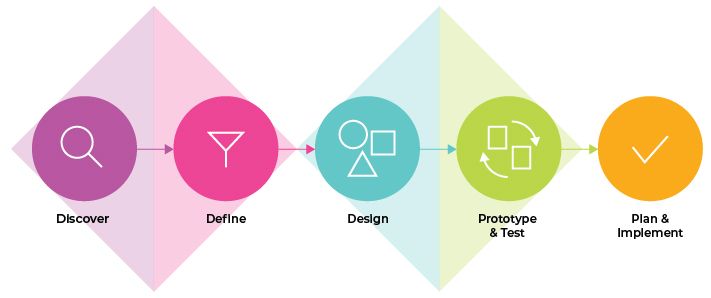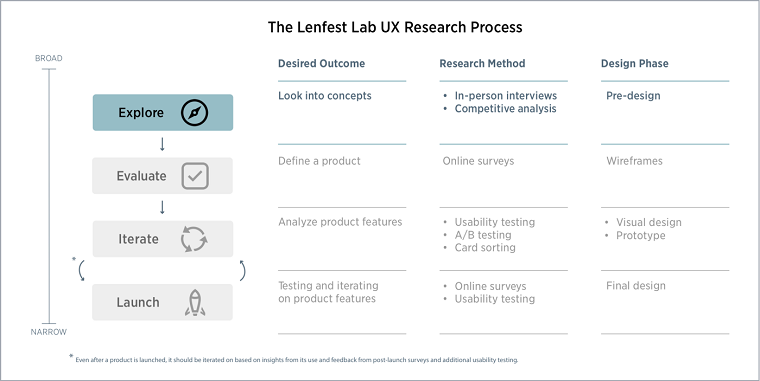What Is UX Research for Ecommerce?

If you want to create websites and digital goods that give exceptional user experiences, UX research is essential. You don't want to afford to make assumptions about your consumers' wants. However, the correct UX research may assist you in determining your users' pain points and how they act.
The insights gained from continuing UX research can help you keep new product development on track and improve and refine current initiatives.
On this page, we'll go over some of the most critical aspects of ecommerce UX so you can ensure your online business is built to sell.
What Is User Experience Research
UX research is an assessment of your users' habits, requirements, pain spots, opinions, and motives to acquire and understand data. Therefore, the research phase of the UX design process is critical.
Asking meaningful UX research questions and executing tests may give you the necessary information to build user-centred solutions.
| Get Started Now to Grow Your Online Business with the Best AliExpress Dropshipping Tool - DSers! |
Journey mapping, usability audits, and benchmark testing are UX research methods that may help you understand the problem you're attempting to address and, ultimately, what your users need and desire from you as a designer or developer.
Because we usually need to develop solutions for individuals who are not like us, performing UX research also assists us in avoiding our prejudices.
UX research can assist you with:
- Determine user issues and obstacles.
- Discover patterns and similarities in how individuals think and behave.
- Validate or refute your assumptions.
Your UX research methodology will be determined by your user experience goals, the topics you wish to study, and the resources available.
UX research is classified into two types:
- Quantitative
- Qualitative
Understand the Two Types of UX Research
Here is the best explanation of both the types of UX research. Give it a thorough read to get more familiar with the term and the process:
Quantitative User Experience Analysis
The results of quantitative UX research are expressed quantitatively. For example, consider objective items such as graphs, charts, and analytics reports.
This study is important for understanding what's going on on a website or app from the user's perspective.
Qualitative User Experience Analysis
Qualitative UX research evaluates user behaviour directly through observation, interviews, field studies, and usability testing. This form of study assists in breaking down the primary user difficulties on a website so that they may be addressed.
Fundamentals of User Experience Research
You'll take five essential stages to do UX research for your projects. Here you go:
- Goal: Identify the knowledge gaps that need to be filled. For instance, what information do you need to understand about your users and their needs in order to begin developing or improving a UX process?
- Hypothesis: Determine your beliefs about your consumers and develop a tested hypothesis. What is the expected outcome or outcome of your research? Your research techniques will either confirm or refute your idea.
- Techniques: Select suitable research methods based on deadlines, team size, environment, and hypothesis.
- Process: Carry out the study and data collection using your chosen methods.
- Synthesis: Take the data gathered throughout the research phase, arrange it into patterns, and convert it into insights that may be used to improve design efforts.
6 Crucial UX Research Methods
Let's go through some particular UX research approaches in greater detail. There are five main ways to do UX research:
- Testing for usability
- Sorting cards
- Journey planning
- Testing for benchmarks
- Easy communication
- Analytical examination
Now, explore each point below to understand the best ways of doing UX research:
1. Evaluation of Usability
Do you want to discover how your website's visitors genuinely react? Then, try it out on real people. Usability testing is the way to assess a product by putting it through its paces with real-world users who reflect your target demographic.

During usability testing, researchers assign particular tasks to participants while observers observe, listen, and take notes on items like:
- Whether they will be able to find what they are seeking and achieve their objective.
- How rapidly they can accomplish it
- Whether they follow the intended course or take an unexpected detour
- What people are feeling during the test. Are they frustrated? Delighted? Neutral?
Researchers and user experience consultants instruct participants to say whatever comes to mind while performing the specified activities. What people speak out loud might include what they are seeing, thinking, and experiencing.
2. Sorting Cards
Card sorting is a quick and effective approach for UX researchers to organise a site's content and features into an easy-to-navigate, logical framework.
UX designers put the names of products or features on cards, which are then given to users to classify rationally. The findings of the sorting exercise are utilised to generate sitemaps that correspond to how consumers think.
3. Journey Planning
Developing a step-by-step and best visual depiction of the user's interaction with a website and their requirements and perceptions during the interactions is known as journey mapping.
The map enables you to portray the story of your consumers' interactions with your brand across all touchpoints, such as email, social media, live chat, and other channels.

Journey mapping allows you to learn more about the customer's experience than you currently know. Visible interactions are simply a small part of the whole customer journey. The customer journey map assists your UX research team in understanding all the stages customers take while interacting with your company (both visible and invisible).
UX designers may match a website or app with how consumers think and their activities after they have a complete picture of the user experience.
4. Testing UX Benchmark
UX benchmark testing assesses a product's user experience by comparing it to relevant standards (like the previous performance of earlier versions, competitors, or industry benchmarks).
Benchmarking allows you to measure and track progress. The data gathered from this form of user-experience testing can be used as a measure for redesigns.
5. Easy Communication
The language you employ on your website is essential to sales success. You should write simply and plainly so that anyone reading may understand where they can discover their requirements and how to take a step ahead to purchase it. The better the UX you give to all of your site's users, the easier your site is to grasp.
6. Analytical Evaluation
Analysing provides quantifiable information about how your users interact with your site. For example, you may check for problems on your site, such as a high bounce rate, or you can obtain reliable statistics on your cart abandonment rate.
By including an analytics evaluation in your UX study, you will be able to:
- Reduce conversions by preventing or correcting them.
- Identify issues with traffic, content, navigation, or aesthetic design.
- Demonstrate or refute beliefs regarding correlation vs. causality.
- Show stakeholders hard facts concerning research findings.
How to Ensure a Positive User Experience
Some simple tactics are the greatest approaches to giving a solid UX to your site. These are all basic strategies to ensure your users have a good time on your site.
Thoughtful 404 Pages
Users do not enjoy 404 pages. They nearly always indicate that the desired page no longer exists. You can come up with an entertaining, innovative technique to alert users that their website isn't accessible to avoid user frustration with a 404.
Google notably employs a hand-drawn robot, while other sites employ amusing images such as a stick figure stumbling down the stairs or a visual of someone looking perplexed. Whatever you choose, keep it unique, appealing, and lighthearted.
You may also provide a few links below your image to recommend pages similar to the one someone was attempting to visit. As a result, the user remains on your site rather than exiting their browser.
Consider to Write Brief Paragraphs
This ancient rule of newspaper writing also applies to the Internet. Short paragraphs are simpler to read than large paragraphs, and people are more inclined to read them.
This is because extended paragraphs make users feel stressed as if they have homework to complete. That is the last thing you want your website to express. So instead, give a positive user experience by creating short, succinct paragraphs encouraging visitors to read every word on your website.
Use Calls to Action
Finally, each page on your site should include a call to action that instructs the user on what to do next. Most significantly, this entails informing consumers of how they may move one step closer to becoming paying customers.
Whether that means connecting to category sites, particular product pages, or just providing a "Buy now!" button is up to you. All of these are clever approaches to attract new clients. However, the nicest aspect of a call to action is that it nearly always produces good consequences. There is a lot of psychology behind calls to action, and you can utilise that knowledge to help your ecommerce business thrive.
The technique of user experience research has been critical to the success of the world's most prominent online merchants and e-commerce websites.
UX research findings can lead to:
- Conversion rates have increased.
- Better goal alignment across businesses and teams
- Enhanced user satisfaction
- Design and development time has been reduced.
User experience research procedures give important insights that enable businesses to understand their customers' wants, intents, and behaviours, allowing them to keep their consumers in mind throughout all stages of the design process. Continuous UX research may also provide you with useful information about your audience that you can utilise again and again.
UX research should be at the top of your priority list if you want to develop experiences that meet — or surpass — customer demands and expectations.
Bottom Line
Keep in mind that the research process is not a one-time event. Ideally, you should be receiving new data on a monthly or quarterly basis and fine-tuning your understanding of your clients appropriately.
However, you should collect consistent data throughout seasons and re-evaluate your location on a yearly basis. And, if you wish to improve the ecommerce UX of your digital product, just visit DSers. You will get the industry's best solutions regarding your existing issues and be able to determine the future steps more proficiently.












 Company
Company
 Why Choose DSers
Why Choose DSers
 Blog
Blog
 Help Center
Help Center




 Live Chat
Live Chat